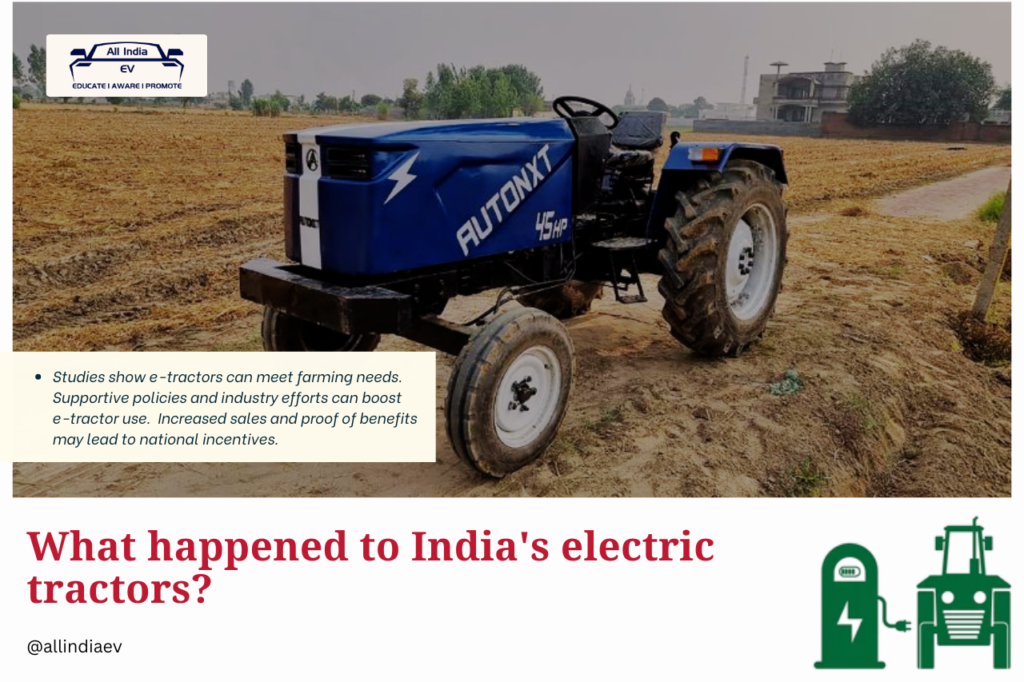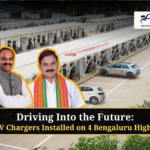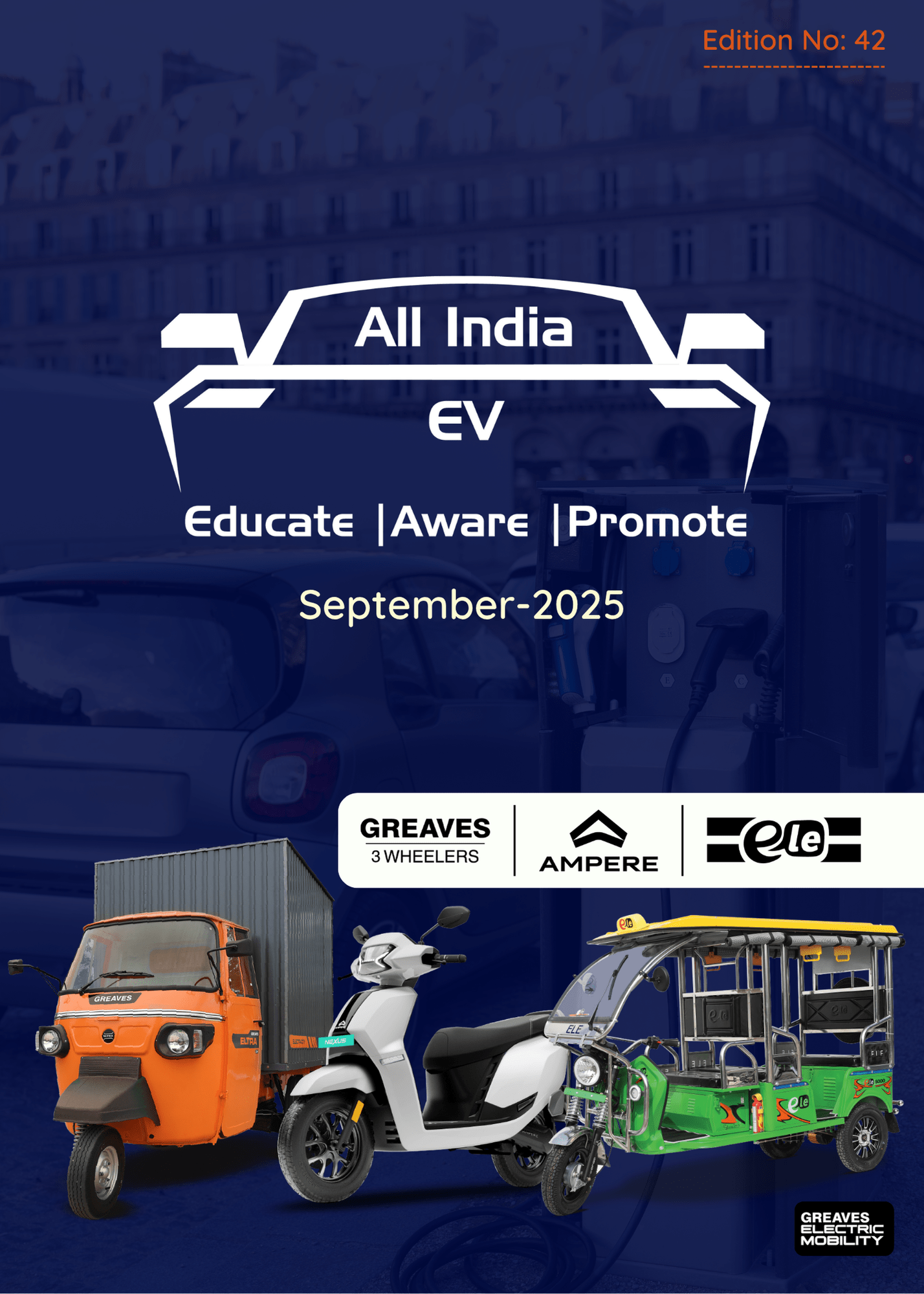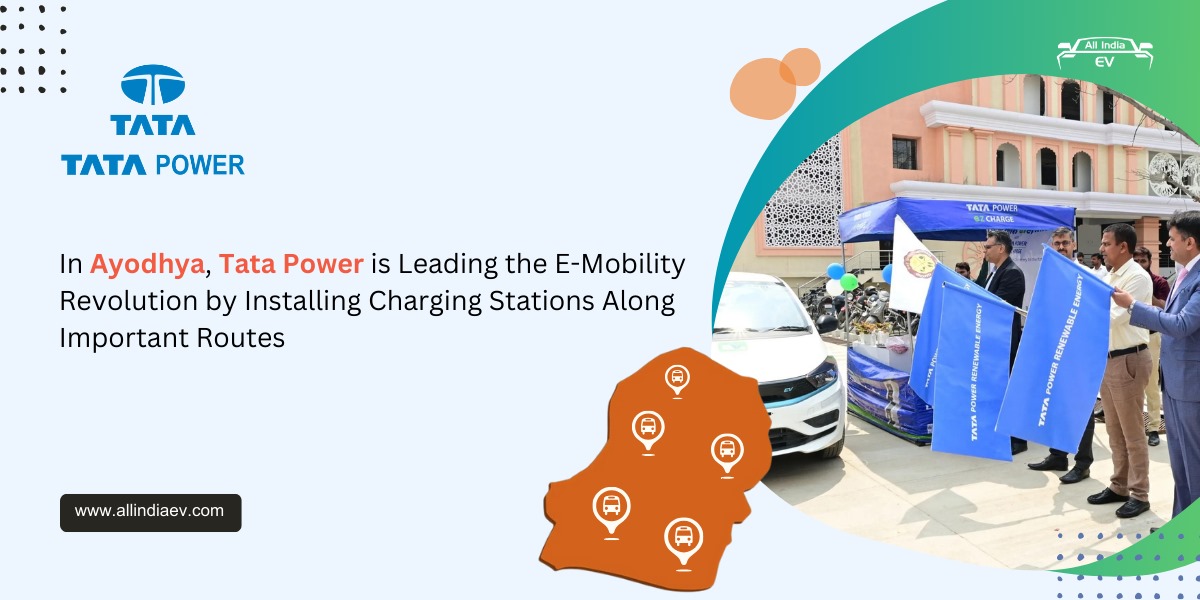
Electric-Tractors Meet Farming Needs: Supportive Policies & Industry Push Could Boost Sales and Unlock National Incentives for Wider Adoption in India
Tractors are an inseparable part of India’s agricultural backbone, yet electric tractors (e-tractors) remain conspicuously absent from the country’s fast-growing EV adoption story. According to recent data, not a single e-tractor was registered in India in FY 2024–25, raising concerns about the pace of electrification in this crucial non-road sector.
A Growing Problem with Emissions
Tractors are ubiquitous across Indian states and remain indispensable for agriculture. But they are also a hidden source of rising pollution. According to a 2016 study by the International Council on Clean Transportation (ICCT), emissions from non-road vehicles like tractors are projected to exceed those from on-road vehicles by 2030. The urgency for cleaner alternatives like e-tractors is therefore clear.
E-tractors offer several advantages—zero tailpipe emissions, drastically lower operating costs, and reduced noise and vibration levels, which translate to better long-term health outcomes for farmers. So, what’s stopping their adoption?
Incentives Exist, But They Miss the Mark
The Central Government’s PM E-DRIVE scheme mentions “emerging EVs,” but it has yet to roll out specific incentives for electric tractors. In this policy vacuum, some states have taken the initiative:
- Andhra Pradesh offers a 5% subsidy on e-tractors priced under ₹8 lakh. Unfortunately, most e-tractors exceed this price, rendering the subsidy ineffective.
- Madhya Pradesh provides tax and registration fee waivers, a modest push.
- Haryana leads with a 50% subsidy (up to ₹5 lakh), the most generous policy in India. Yet, not a single e-tractor has claimed the benefit since May 2022, pointing to a serious supply-side challenge.
The Supply Conundrum
Several startups have stepped in. Companies like AutoNxt Automation, Shree Marut E-Agrotech, and TI Clean Mobility have e-tractors certified under the AIS 168 safety standard—a mandatory requirement from the Ministry of Road Transport and Highways. Other players like Moonrider AI, Bullwork Mobility, Cygnus Motors, and Sukoon Solutions are in pilot or limited production phases.
Yet, mainstream diesel tractor giants have remained on the sidelines, stalling wider adoption. Their entry could unlock trust and access to existing farmer networks, accelerating market penetration.
Real-World Pilots Underway
To bridge this gap, ICCT is currently conducting pilot studies in Haryana using 28–60 hp e-tractors from various manufacturers. Early findings show that fuel consumption in diesel tractors varies drastically across agricultural tasks—from 1 L/hr for sowing to as high as 9 L/hr for baling crop residue. E-tractors present significant savings opportunities here.
Smaller e-tractors (28–45 hp) could already serve crops like sugarcane and horticulture, while larger models (45 hp and above) are necessary for wheat, paddy, and crop residue management. Additionally, tractors are widely used for transport, with fuel efficiency ranging from 4–8 L/km depending on load—another area ripe for electrification.
The Road Ahead
India has the manufacturing potential. The policy groundwork has begun. What’s needed now is coordinated action. State-led pilot programs must expand to generate robust evidence on real-world benefits, helping shape more effective EV policies. At the same time, manufacturers—especially legacy players—must step up their game.
E-tractors are no longer a futuristic concept. They are here and ready. With smarter policies and industry leadership, India can power its farms with clean energy and lead a truly inclusive EV revolution.










